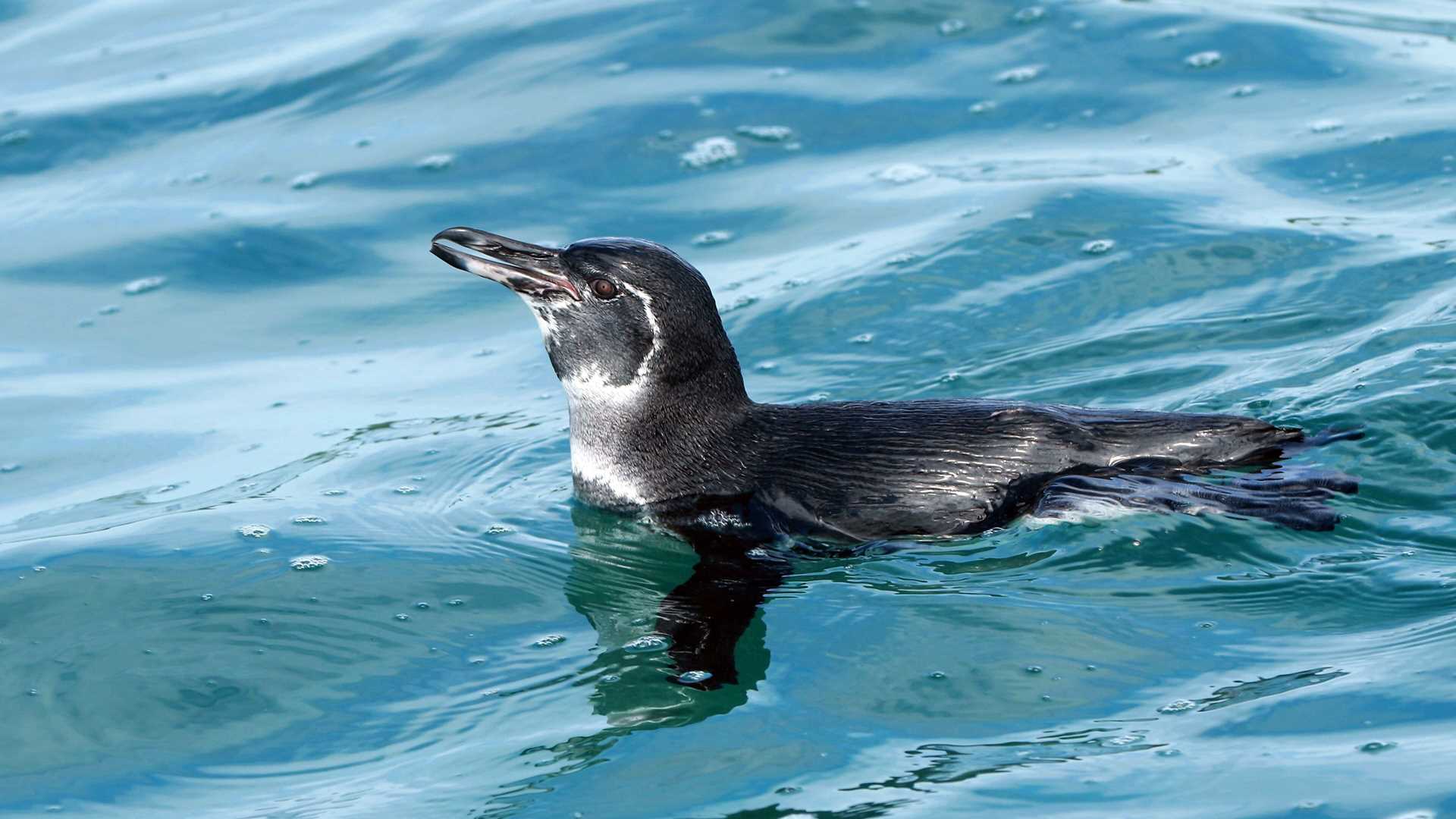After visiting the central part of the Galapagos, National Geographic Endeavour II began sailing northwest towards Fernandina and Isabela, the youngest islands. These islands are home to a large number of native and endemic species. After sailing all night, we finally arrived at the Bolivar Channel early in the morning. The channel separates Isabela and Fernandina Islands. Some of our early-rising guests joined us in search of marine mammals. A cloudy sky behind the gigantic volcano prevented the sun's rays from illuminating the area, forming a halo of mystery around a completely surreal landscape.
After breakfast, we begin our visit to Fernandina. As soon as we disembarked from the Zodiacs, we observed marine iguanas everywhere. Their black color blended in with the rocks, giving the impression that they were petrified in the lava. As we walked along the beach, we observed many female iguanas digging in the soft white sand to prepare nests to lay their eggs. Throughout the intertidal zone, flightless cormorants, Galapagos sea lions, and green sea turtles delighted our guests.
After visiting the island, we returned to the ship to start one of the most beautiful snorkeling outings you can imagine. The waters west of the Galapagos are like nowhere else in the world. This is the only place where we can swim with Galapagos penguins, flightless cormorants, sea turtles, sea lions, and colorful fish. Today was really amazing, and we captured great underwater videos and photos of these incredible creatures.
In the afternoon, we headed north to visit Punta Vicente Roca. Named after former Ecuadorian President Vicente Ramon Roca, this visitors’ site is located at Isabela Island. It is close to the equator and Ecuador Volcano, which has an open caldera following a huge eruption thousands of years ago. We boarded Zodiacs and headed to the calm bay of Vicente Roca to discover the secrets of this amazing place. It was rainy and cloudy, but these were no impediments to observing a huge flock of blue-footed boobies in a feeding frenzy. Close to the rocks, fur sea lions swam indifferently around us, and we observed Galapagos penguins, flightless cormorants, and green sea turtles everywhere.
Just before sunset, National Geographic Endeavour II crossed the equator. After a special ceremony of dancing to the rhythm of the limbo, we crossed the line with the Ecuadorian flag offering us an official welcome to the Southern Hemisphere. With the lasts beams of the sun, we observed seabirds returning to the islands. A whale swam by, reminding us that today was a unique and special day in this natural paradise called the Galapagos.







